Ladakh – The Land of High Passes
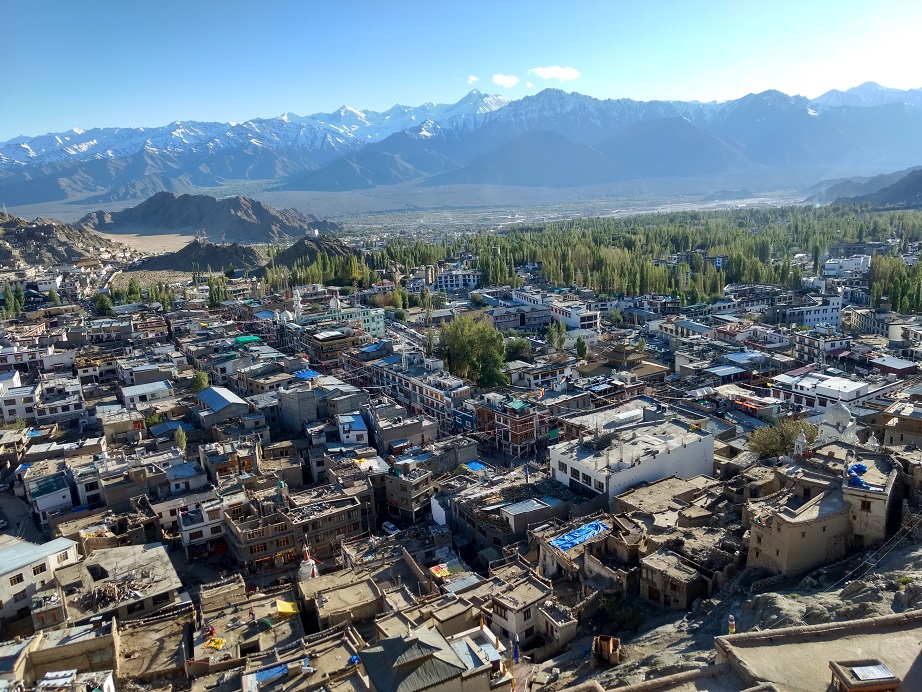
A beautiful area surrounded by the sky-piercing peaks of the snow-capped Himalayas, Zanskar and Karakoram ranges, which is further golden by the crystal waters of the Shyok, Zanskar and Indus rivers. Leh is the main city of Ladakh. Also, it is the coldest desert in the world. It is at an altitude of 11,000 feet above sea level. Leh city is a paradise for adventure sports. Its rugged terrain and rivers are great for mountaineering (trekking), river rafting in a river that flows through the mountains (camping) and moire-cycling. As the winter season is near. In such a situation, the city is covered in a sheet of snow. In this way, it has become a wonderful place for sports played in cold weather. The famous journey Chadar Trek starts from a very cold village. This village is at 66 kms from the city. This yatra covers most of the area of the snow-frozen river Zanskar. During this journey, travellers also pass through many such places where the layer of ice is very thin. In such a situation, there is also a possibility of drowning in the icy river. Apart from this, travellers also spend the night in icy caves.
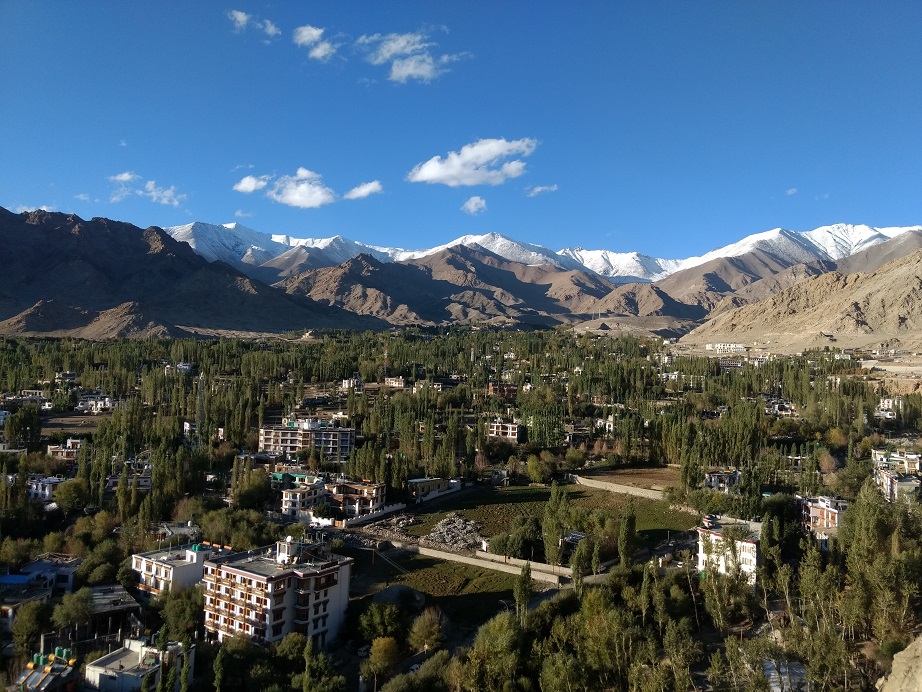
Leh is surrounded by three very high and beautiful lakes Tso Moriri, Tso Kar and Pangong Tso. These lakes look as if sapphires are studded on the ground. The natural wonder that leaves travellers stunned is the magnetic hill. This hill is located outside the city. It is said that it negates gravity and pulls the vehicles up. Leh is a major centre of Buddhism and has many important monasteries. Travelers can visit several monasteries and get acquainted with the ancient culture of the area. There are old-time paintings on the walls, in which meditation, therapeutic and spiritual activities have been mentioned.
The city of Leh was earlier the capital of the state of Ladakh. That is why the rich history of Ladakh is seen here. The Leh Palace has been built in the heart of the city since the 17th century. It is a wonderful specimen of medieval Tibetan architecture. If you want to enjoy Ladakhi culture, then the best way is to stay in the house of a local person there. They will leave no stone unturned to introduce you to the Ladakhi culture. Another way to get to know the region is to enjoy its fruits. Apricots, apples and other fruits and vegetables found in its orchards and markets.
How to Reach
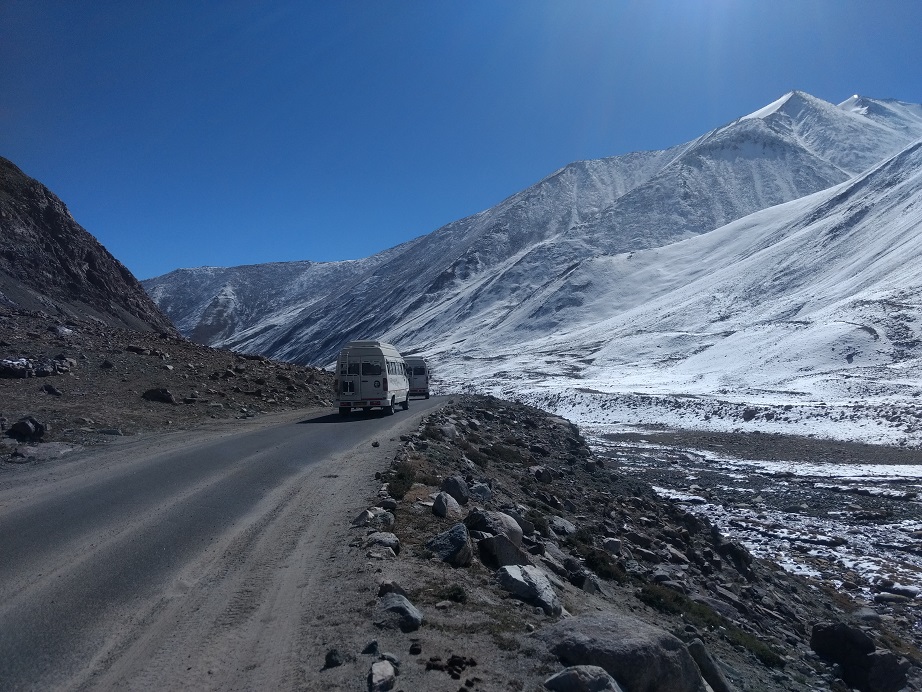
By Road: Leh is not easily accessible by road, there are only two ways to reach Ladakh one is Delhi – Manali – Leh and second one is Delhi – Jammu – Shrinagar road, due to heavy snowfall these roads are only accessible in summers. There is only one bus of Himachal Road Transport Corporation which is directly operating from Delhi. You can take a shared taxi from Srinagar & Manali.
By Train: Train is not available in Ladakh region, the nearest railway station is Jammu Tawi, which is 700 km away.
By Air: Kushok Bakula Rimpochee Airport is situated in Leh town, there are frequently flights from Delhi & Mumbai till 11:00 am.
Tourist Attraction
Shanti Stupa
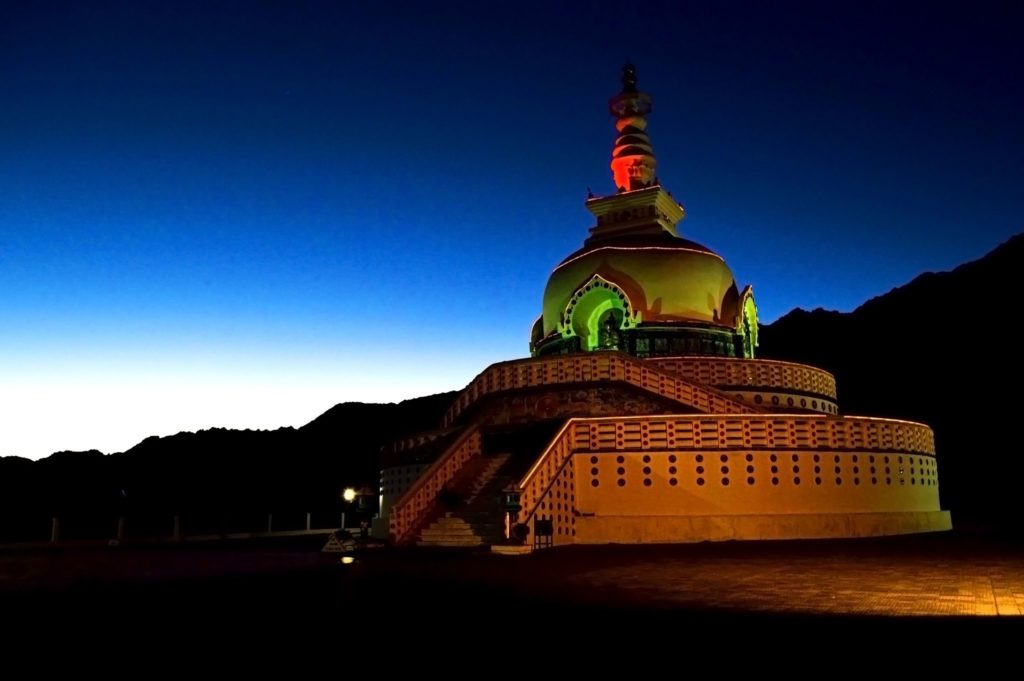
Situated amidst zig-zag hills, the ancient building of Shanti Stupa is a splendid piece of art. Beautiful Buddhist murals and golden artwork adorned with lavish artwork make this stupa an attractive tourist destination. To bask in the peace and beauty of the surroundings, travellers can take a walk around the stupa while reciting mantras, which are believed to bring immense peace to the mind. Tourists can go to the balcony of the tower of the stupa and take in the beautiful views of the surroundings. It is believed that the stupa was built between 1983 and 1991 by Japanese monks to mark the completion of 2,500 years of Buddhism. The purpose of its creation was to promote the idea of world peace. To reach the stupa, you must take a 15-minute walk from Jangspa.
Leh Palace
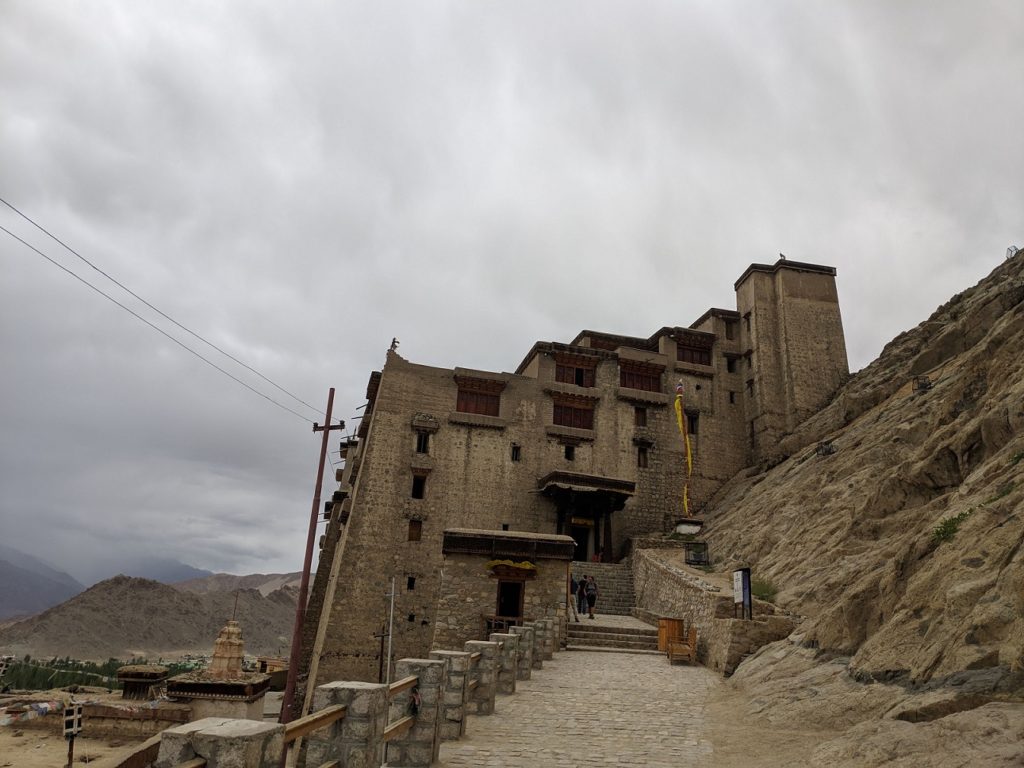
Popularly known as Lehen Palkhar, the Leh Palace was built by King Sengge Namgyal during the 15th century. The work of this palace was completed by the 17th century. Its facade resembles that of the Potala Palace in Lhasa, the capital of Tibet. The terrace of Leh Palace offers amazing views of the Ladakh region and Stok Kangri. With huge walls and wooden balconies, it is a great example of medieval Tibetan architecture. This palace is of 9 floors. The entrance to the palace is decorated with carved wooden sculptures. The upper floors were used to house the royals, while the lower floors were used as storerooms and stables. Some of the interesting features of the palace include the Namgyal Stupa, the Chandajik Gompa full of frescoes and the medieval murals present in the Chamba Lakhang temple. The museum inside the palace houses artifacts that are more than 450 years old. The Archaeological Survey of India is currently working to preserve the heritage of Leh Palace.
Stok Palace

The Stoke Palace, situated on the banks of the Indus River on the outskirts of the city, is still a unique symbol of royal heritage. This three-storeyed Stoke Palace, which holds its memories, remains the summer home of the royal family of Ladakh. Of its 80 rooms, 12 rooms are still decorated with attractive furnishings. This Stoke Palace, which holds the heritage, is worth seeing. This palace is a must visit as there are many fascinating things to see here, royal Thanka paintings, king’s crowns, ancient royal clothes, coins, turquoise and lapis lazuli jewellery. Here the queen’s ancient turquoise jewellery and gold head jewellery, Juboor, attracts visitors. Apart from this, this palace has a good collection of many religious items. The palace also houses an Afghan sword from the 16th century. There is a cafe in the palace grounds, which offers beautiful views. A short distance from the palace is a Buddhist monastery, which was built by Lama Laving Lotus. Every year, a special dance is performed here on the 9th and 10th day of the first month of the Tibetan calendar. The specialty of this dance is that the face of the dancer is covered with a mask. This palace was built in 1820 by Raja Tspal Namgyal, the ruler of Ladakh. When the Dogra army attacked his Leh Palace, the Raja and his family moved to this Stoke Palace.
Pangong Lake
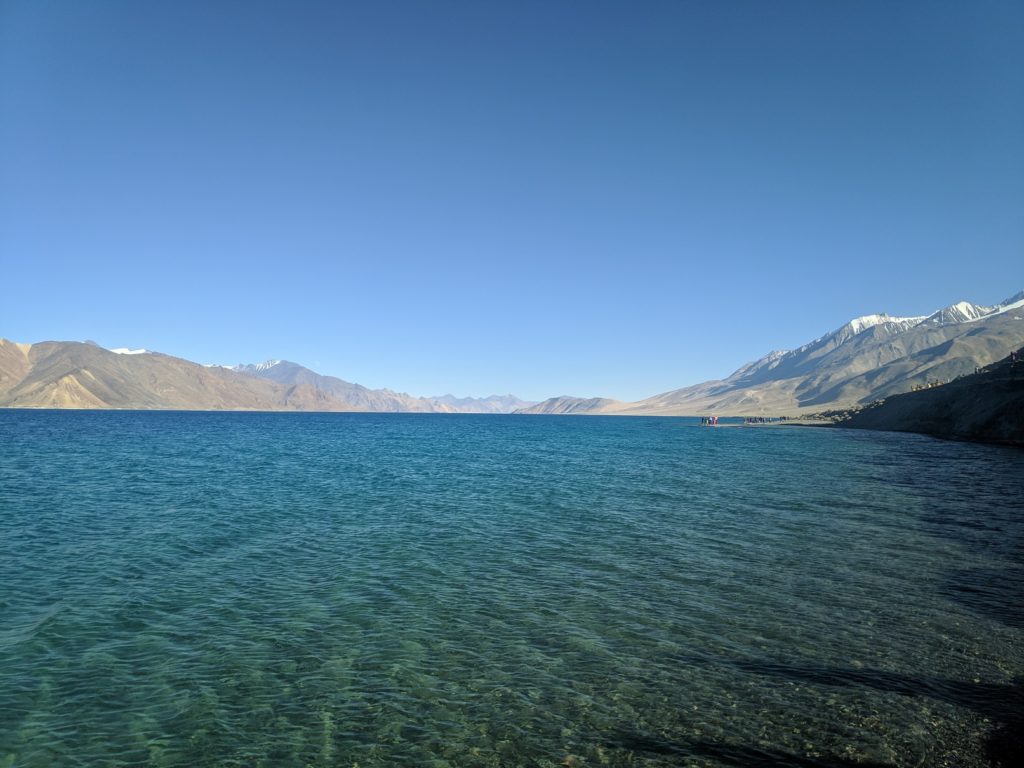
The ancient Pangong Lake with blue coloured water is present at an altitude of 14,270 feet above sea level. It is said to be the largest saltwater lake in the world. It is almost present on the India-China border. One part of it is in India and the other part is in China. This lake is so beautiful that a scene of the Bollywood film 3 Idiots was filmed here. Apart from this, there is also 3 Idiots Point where the yellow coloured scooter used in the climax of the film is standing. This lake is 5 kilometres wide at its widest area. Also, its length is 134 kilometres. There are a variety of campsites along the lake which have all kinds of facilities. This area is about 220 km from Leh.
Tso Moriri Lake
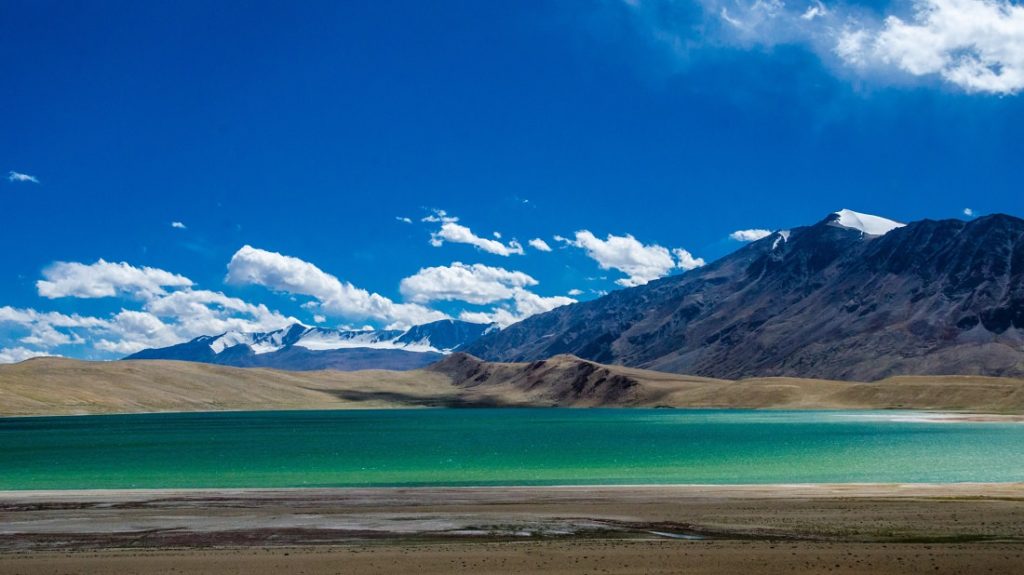
Like a sapphire amidst harsh snowy scenery, the majestic Tso Moriri Lake is one of the most beautiful places in the Ladakh region. Nestled in the Changthang Valley, this 28.km long ancient water body is also called Mountain Lake. Because it is surrounded by many high peaks. At any time of the day, you can see the birds fluttering. This lake has now been named as Wetland Reserve. Some of the popular avifauna you can see are the bare-headed goose, the great. Crested grebe, the brahmin duck, and the brown-headed rooster. Tourists can also see some varieties such as Bharal or blue sheep, marmot, Tibetan sheep, red fox and Qiang or Tibetan donkey. Most Himalayan rabbits are found near this lake. Tso Moriri is the best place for those who have come to enjoy biking in the mountains. Ladakhis consider it a holy lake.
Tso Kar Lake
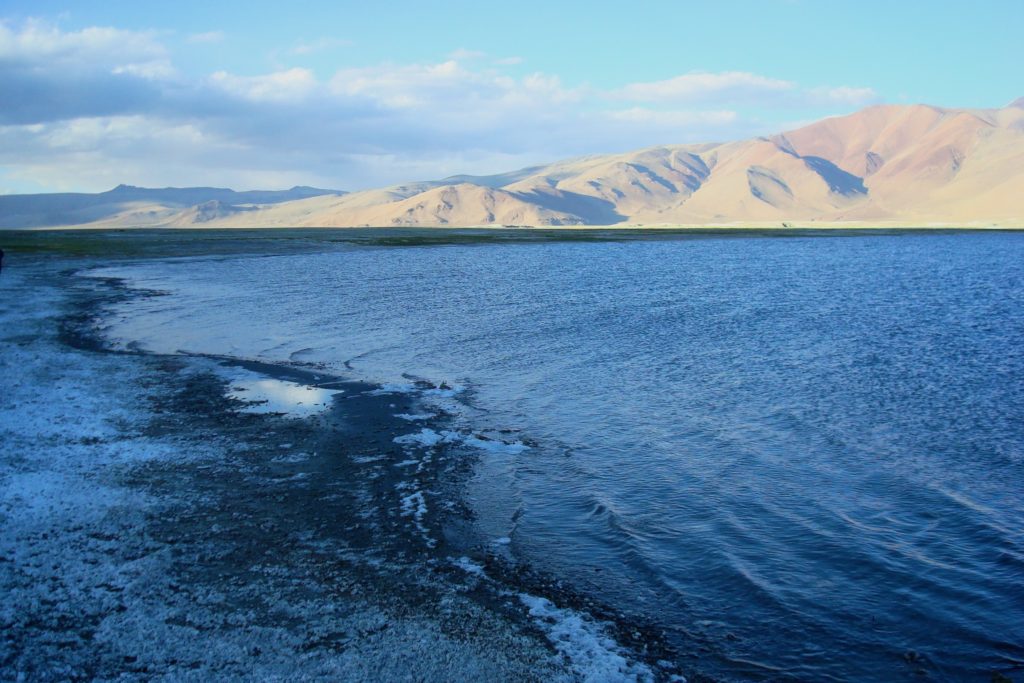
Tso Kar Lake, the smallest of the three high-altitude lakes in Ladakh, is about 50 km from Tso Moriri. Situated at an altitude of 15,280 feet, it is surrounded by high mountains which are home to the unsuspecting snow leopard. It is also called the White Lake due to the white salt content in the water deposits on its banks, it attracts tourists with its beauty. The area around the lake is full of wildlife and flora and is also an important point for bird watchers. Bird watchers are seen here especially during the migration season. During this time many species come here to lay their eggs, including the black-necked crane. Nomadic settlements of Thugje and Gursen guard the lake and its surrounding area. The best time to visit this lake is between the months of May and August.
Nubra Valley
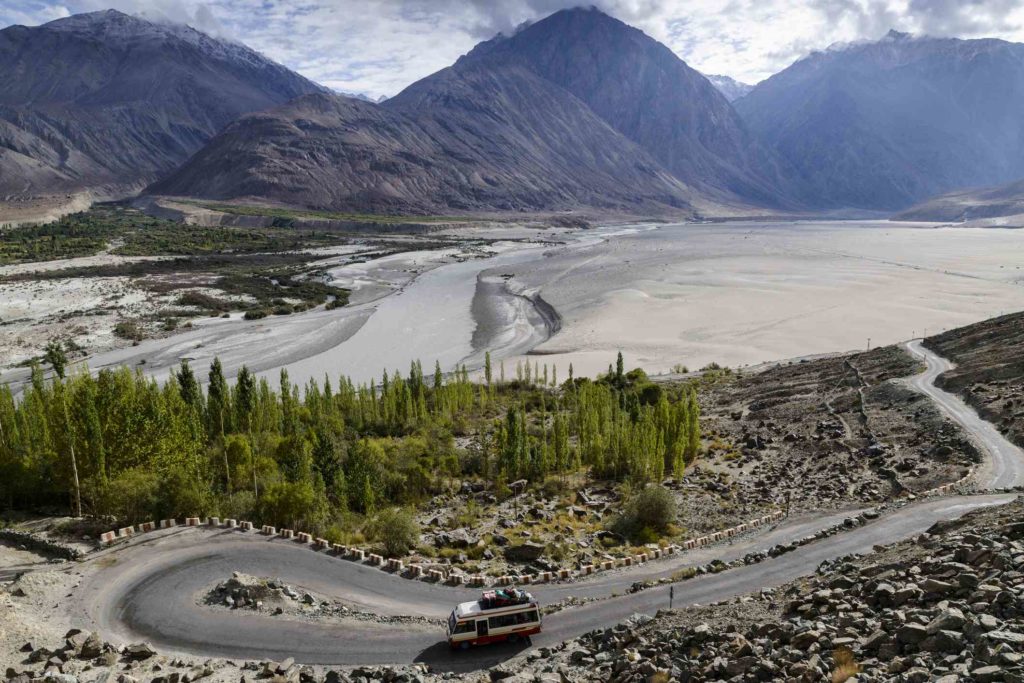
Nestled in the middle of the brown shade of mighty mountains, the lush green Nubra Valley is a miracle of nature. This deep valley of Ladakh is given the status of an oasis in the middle of the desert. The natural beauty here is amazing. With vast stretches of dry sand dunes, ancient ruins and serene Buddhist monasteries, the Nubra Valley is a very attractive tourist destination. Located at about 150 km from Leh city, this valley is situated on the doab of local rivers Rio Shyok and Siachen. The waving icy sand dunes here represent the identity of the cold desert. Two humped camels can be seen here. This Nubra Valley is also famous as the home of the famous Pashmina goat. Panamik Village located close to the world famous Siachen Glacier, is a very good place to stay. There are other places to visit like Dixit Buddhist Monastery, Yarab Tso Lake, Maitreya Buddhist Monastery, Samstanling Buddhist Monastery and Khardung La Marg.
Suru Valley
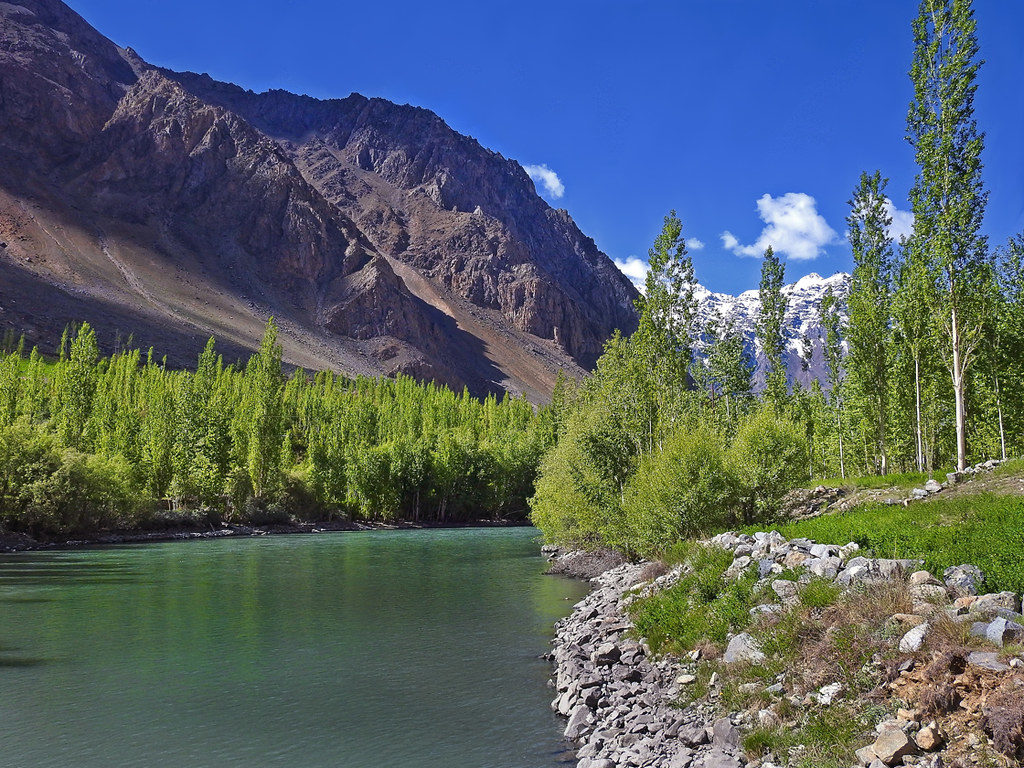
If you go on a trip to Ladakh, do not forget to see the Suru Valley to see the most different view of nature. Surrounded by snow-capped hills, pristine rivers, the picturesque Suru Valley is the most beautiful valley in Ladakh. The most striking feature of this valley is a group of verandah-shaped compartmented valleys. Situated in the Kargil district, this valley boasts a blend of Turkish and Tibetan architecture, which is reflected in the quaint houses here. The most attractive here is Kartse Khar, in which a 7th century statue of Lord Buddha is installed. This statue is situated at a height of about 7 feet. Tourists can also visit Rangdoom from here, which has a beautiful monastery and two small settlements. Panikhar is the base here for those wishing to go mountaineering or on excursions. Jangala Math is also located nearby in this valley. This beautiful monastery is worth visiting. Must visit here. The cultivation of hills of Suru valley is the highest in Ladakh. Also for the adventurous nature lovers seeking pleasure from the risk, the alpine slopes and attractive peaks are visible from a distance apart from the peak of Nan Kun Mountain.
Lamayuru Monastery
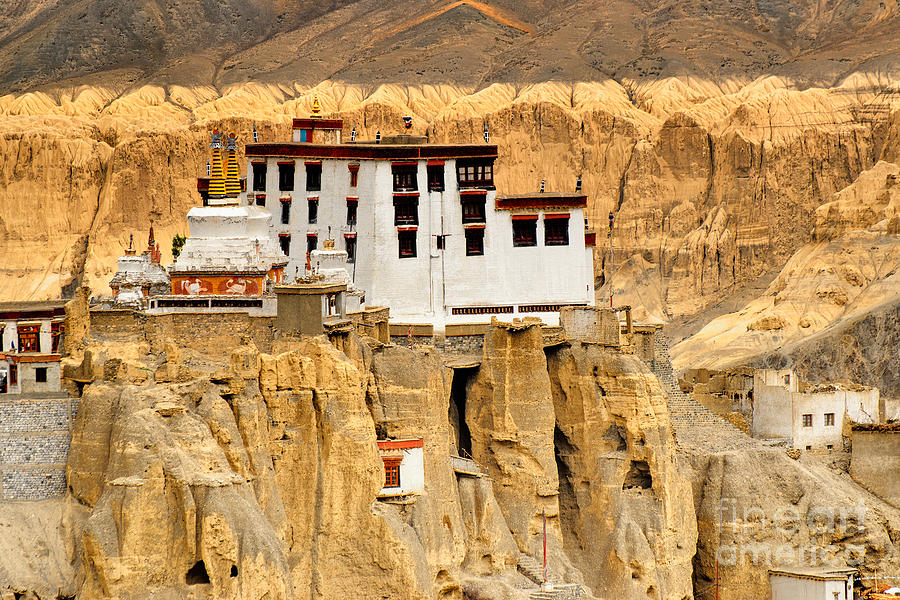
Lamayuru Monastery is located about 127 km west of Leh. It is believed to be the place where Mahasiddhi Naropaye, an Indian Buddhist, came to live in the 11th century. The cave where he stayed still exists today. Due to the teachings of Rinchen Zangpo, the Kadampa School here emerged as a brilliant school. Every year, on the 17th and 18th day of the fifth month of the Tibetan calendar, the monastic festival of Yuru Kabayd is celebrated with great pomp. The dancer dance is performed during the festival days. During these auspicious days, all the temples and thanaks of the matha are opened for the devotees to see and worship. This monastery is located on the Srinagar-Leh highway and is often referred to as Yuru Math. The Lamayuru region is also the starting point of many treks.
Diskit Monastery
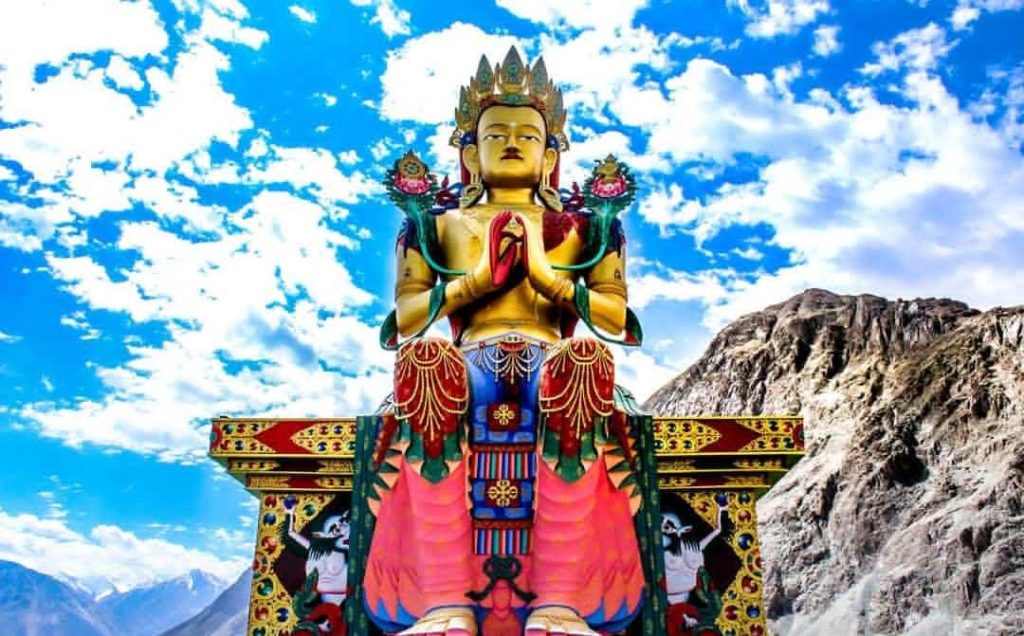
Diskit is the administrative center of the Nubra Valley and is popular for its ancient monasteries. This 14th-century monastery is the largest and oldest monastery in the Nubra Valley. Also known as Diskom Gompa, the most prominent attraction of the monastery is the huge Maitreya Buddha statue in its top. It was inaugurated by HH Dalai Lama. A magnificent panoramic view of the Nubra Valley can be seen from the base of the statue. The monastery was founded in the 14th century by Changzhen Tserb Zangpo and is situated on a hill above the plain of the Shyok River. One must also visit the monastery to see the display of frescoes. Be sure to visit the monastery to attend the Dosoche festival, especially that is held here in December.
Alchi Monastery
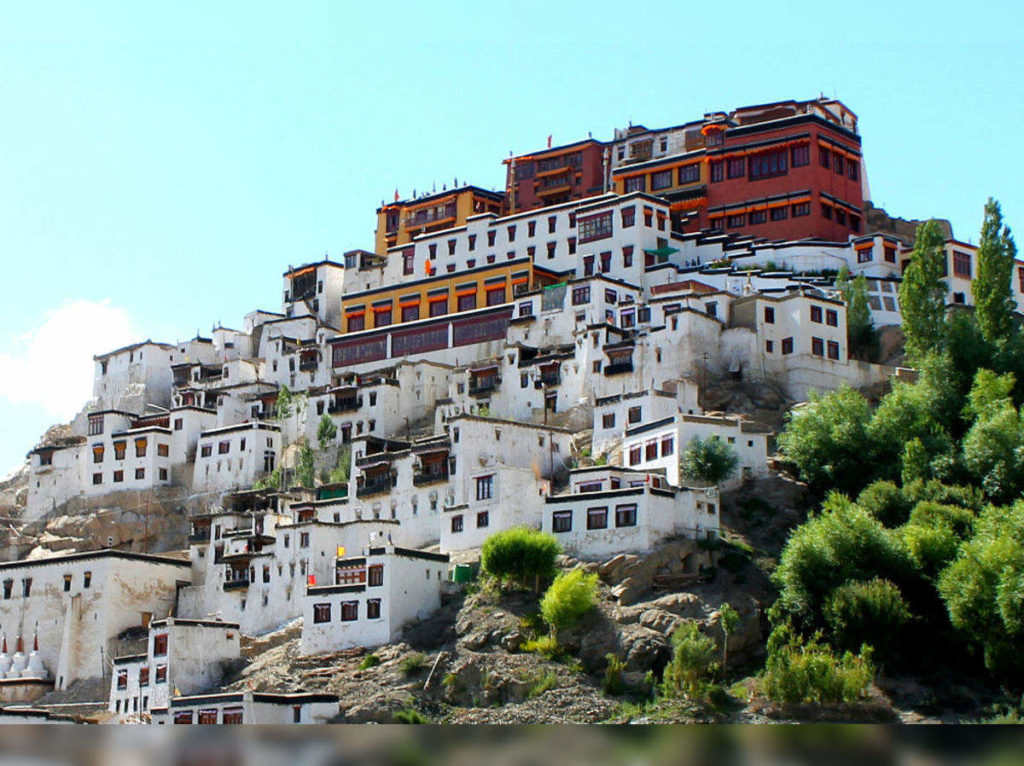
Alchi Monastery is one of the most famous sites in the region. It was built by Rinchen Zangpo. This is the biggest gompa built by him. Rinchen was a translator of Sanskrit Buddhist texts into Tibetan. Tourists can pay obeisance at various temples and shrines. Prominent among these are Buddha Vairochana Lhakhang, Lotswa Lhakhang, Jamyang Lhakhang (Manjushree Temple) and Sutsang Lhakhang. The main statue is of Vairochana Buddha, however, there are other smaller statues depicting Lord Buddha. A unique aspect of this monastery is that the paintings here are not in the Thongka style. Rather, they represent an Indian style of art. To build this monastery, Rinchen Zangpo brought in painters, carvers and sculptures from the Kashmir Valley. Located on the outskirts of the city, the monastery is said to have been built around 1000 AD.
Markha Valley
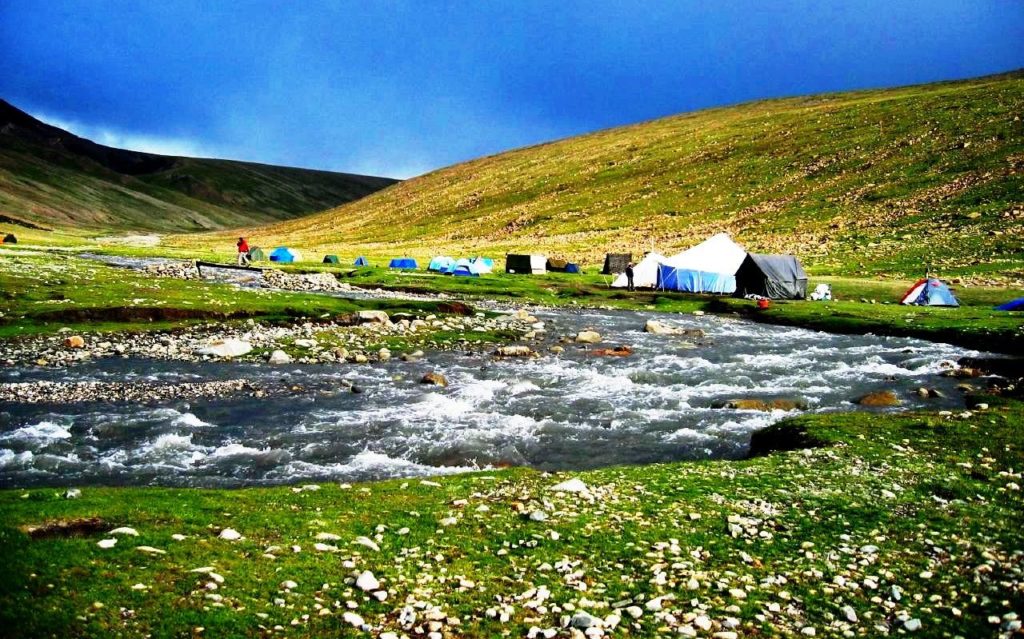
The best season for trekking to Markha Valley is from June to September. It is at an altitude of about 3,700 meters above sea level and takes about eight days to complete. There are scenic spots along the route, which you can experience. Trekking along the banks of the Markha river, you will reach the village of Nimling, where you can see the high peak of Kangytse. Other peaks that can be seen along the route include Cesar Kangri, Stok Kangri and Nan Kun. The most beautiful part of this trekking route is found when you pass through the middle of Hemis National Park. This place is different from any other park. Here you will find animals like snow leopard, ibex and blue sheep. People who are fond of watching animals on this trek must go. Before embarking on this adventurous journey, it is very important to acclimatize yourself to the environment there. If you are going on a trek in a bunch of people and have a guide at the same time, then nothing can be better than this.
Hemis National Park

This area is famous as Hemis Monastery. Hence the huge wildlife sanctuary built in this area is called Hemis Wildlife Sanctuary. Spread over an area of 600 km between the Markha, Rumbak and Sumdah nallahs on the western bank of the Indus river, this sanctuary is spreading its natural splendour. The specialty of this sanctuary is the rugged valleys, rocks and boulders, which offer a natural sight. Apart from this, the grasslands of this sanctuary and many forests of shrubs and trees add to the beauty. The sanctuary is identified as Snow Leopard Reserve. This sanctuary is famous for rare animals. Rare fauna Shapua Bharata wolf, Polas’ cat, Ibex, Tibetan agarli wild sheep and Ladakh’s long legged and pointed horned sheep Urial are also found in this sanctuary. Since bharals and urials are found in large numbers here, they are easy to spot. More than 30 species of avifauna birds can be seen here, most notably the Himalayan Snow Cock and the Chukar Pheasant. The pheasant’s legs are red, it looks like a common chicken.
Shopping in Ladakh
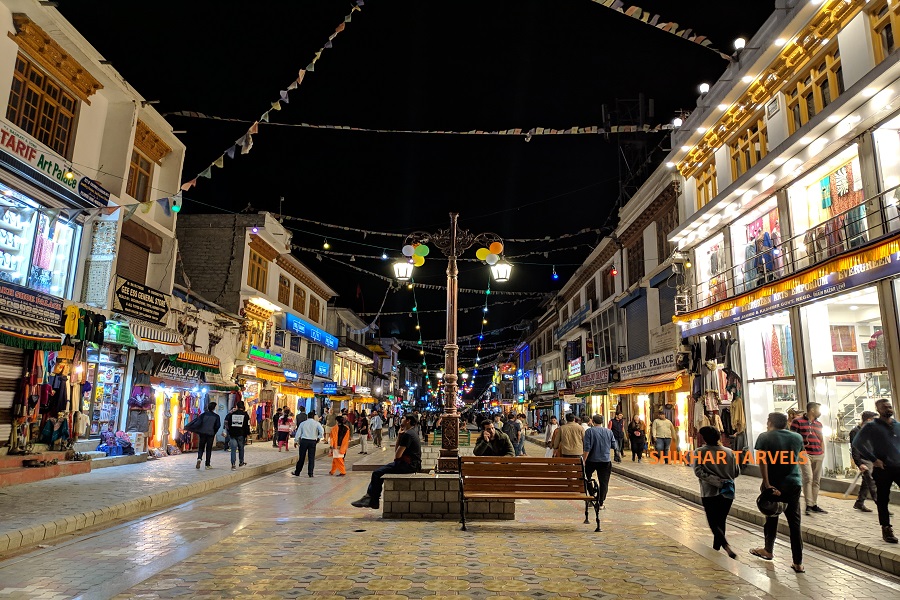
You can enjoy shopping for curios and souvenirs at the markets and markets of Leh in Ladakh on your time touring. Popular items with tourists are pashmina shawls, stoles and other pashmina wool garments. Locally handmade wool socks, gloves, hats and sweaters are a favourite of tourists in Ladakh.
Tibetan handicraft items, including prayer wheels, Buddhist masks and thangka paintings can be bought in Ladakh. Traditional Ladakhi jewellery along with Tibetan silver jewellery and turquoise are also popular with tourists. Apricots that grow abundantly in Ladakh are another popular gift that you can take back to Ladakh as a delicious souvenir of your trip.
Handwoven rugs, rugs, and shawls are available in a range of prices in the Ladakh market. Carpets have floral or geometric designs or dragon motifs on them and can also be cut as decorative wall hangings. Woven in wool from Ladakhi goats gathered, and dyed with natural dyes, and Ladakhi Carpet Rugs are thick, long-lasting and items of utility and beauty, which you can buy while shopping in Ladakh.
Duration: 7 Days 6 Nights
Best Time: June, July, August, September
Region: North India
Holidays Theme: Trekking, Domestic Programs, Special Domestic Packages, Shikhar – Trending Programs of 2021
Routes: Leh – Khardungla – Nubra Valley – Turtuk – Pangong – Leh
Price 2021
INR 22000
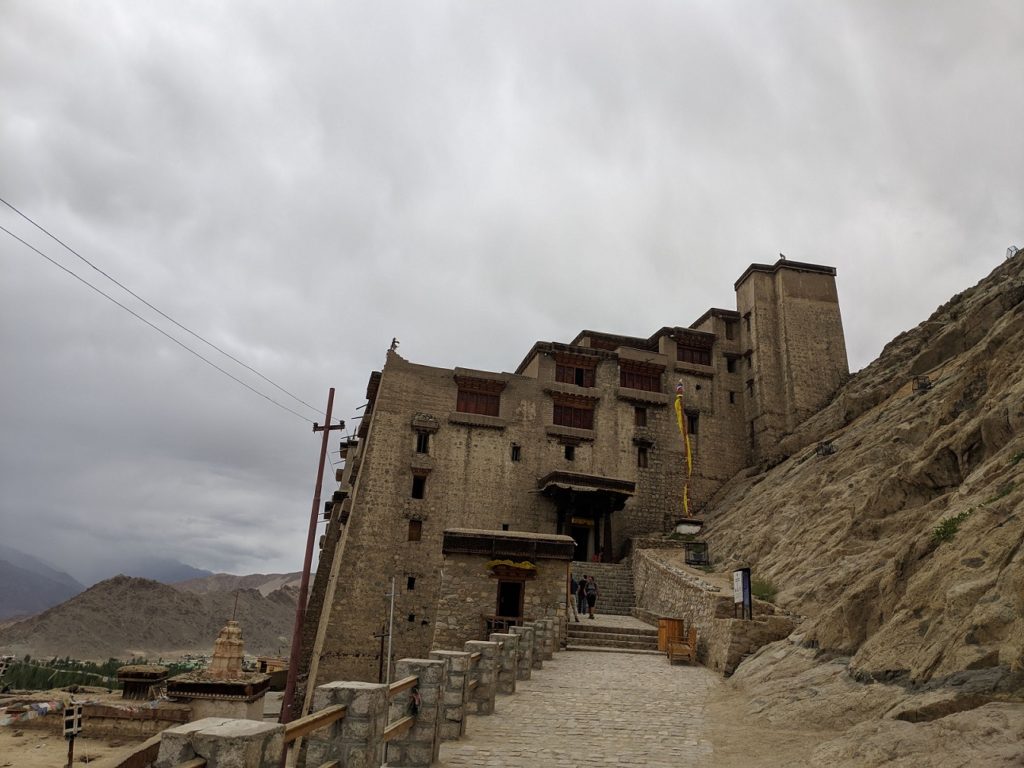
Day 01: Arrive Leh
Altitude: 3,500M
Arrive Leh airport, meet our representative and transfer to Hotel, check in and rest advised to acclimatizational in the high altitude. In the evening visit Leh Palace, later drop at the local market in Leh to explore the city. Dinner and overnight at the hotel.
Meals: Breakfast + Dinner
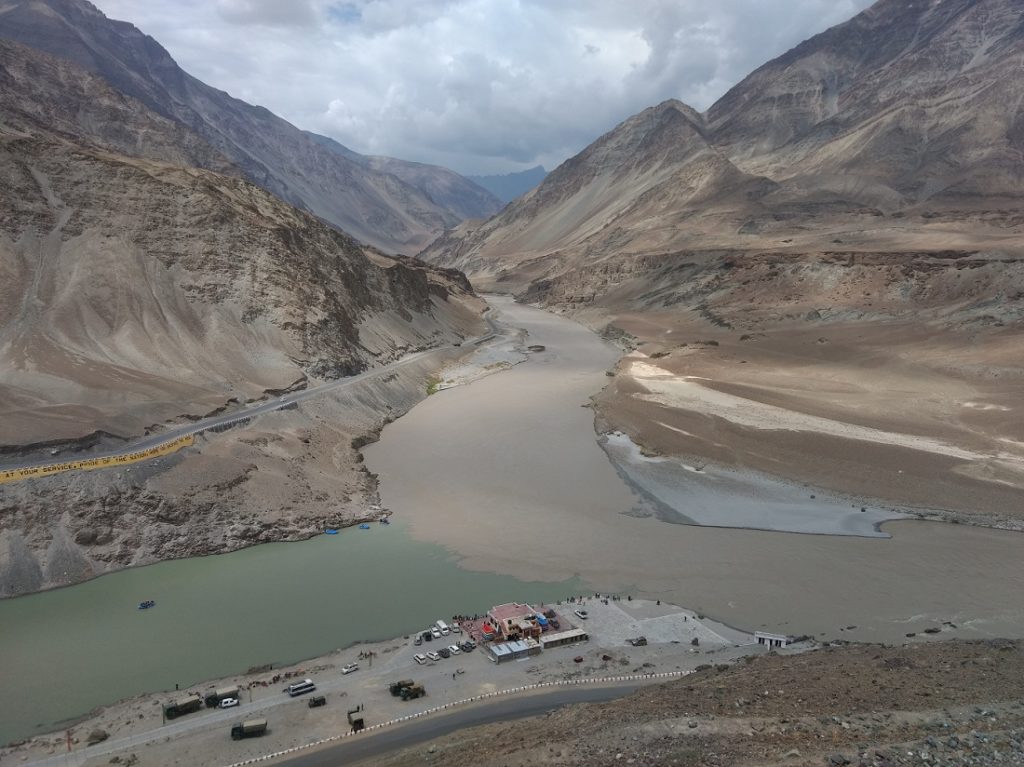
Day: 02: Leh – Magnetic Hill – Gurudwara – Sangam – Leh
After breakfast visit Hall of Fame, Gurudwara, Patthar Sahib, Magnetic Hill and Sangam. You can also enjoy rafting on Zanskar river. Later return to hotel for dinner and overnight stay.
Meals: Breakfast and Dinner
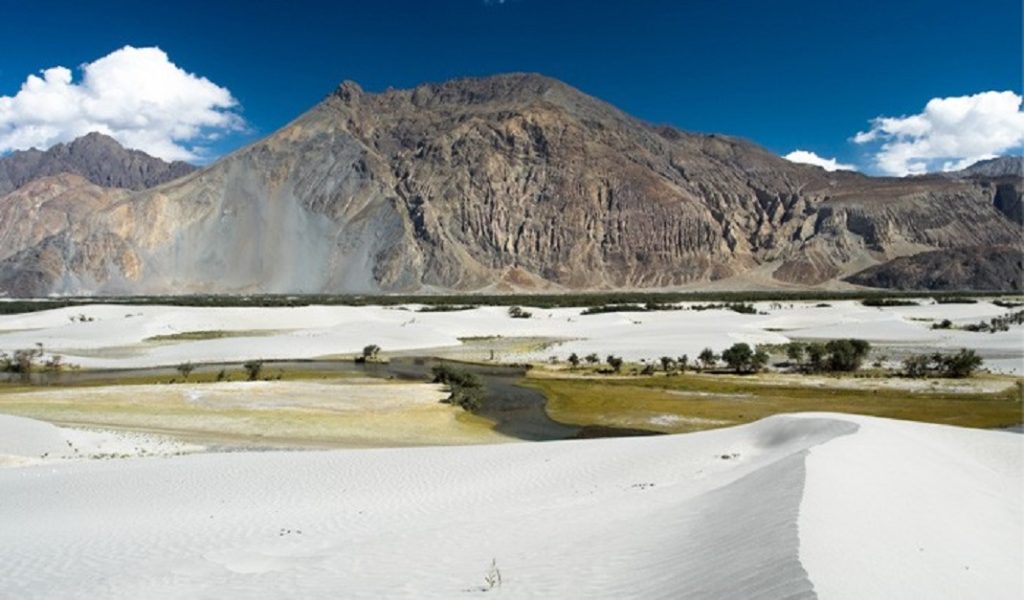
Day 03: Leh – Nubra Valley
Drive: 120 kms.
Time: 05 – 06 hrs.
Altitude: 3,160M
After breakfast we will drive through the Kardungla Top 5359 M (word highest motorable pass with the height of 5359 M) to have a magnificent Nubra valley. On arrival check in to the hotel, later free for leisure, enjoy the beauty of sand dune and dune and double hump camel. Dinner and overnight stay in the hotel.
Meals: Breakfast and Dinner
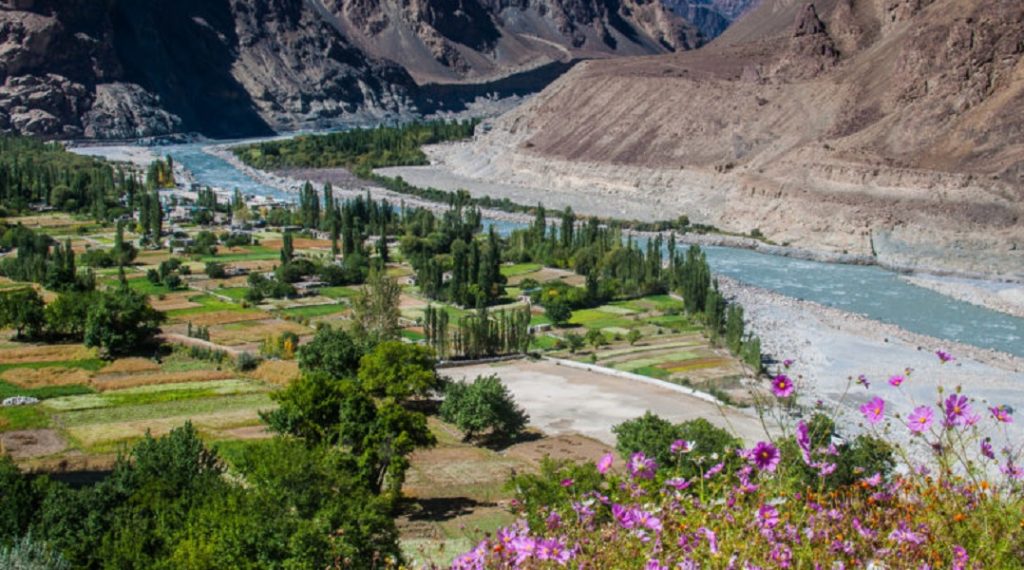
Day 04: Nubra – Turtuk – Nubra
Drive: 175 kms.
Time: 05 – 06 hrs.
Altitude: 3,001M
Morning after breakfast drive to Turtuk village, it is a village which is annexed by India in 1971 war. On arrival explore the village, it offers a cinematic view of Shyok valley or you can also see the world’s second tallest mountain peak Mount K2 which is in Pakistan. Later return drive to Nubra for dinner and overnight stay.
Meals: Breakfast and Dinner
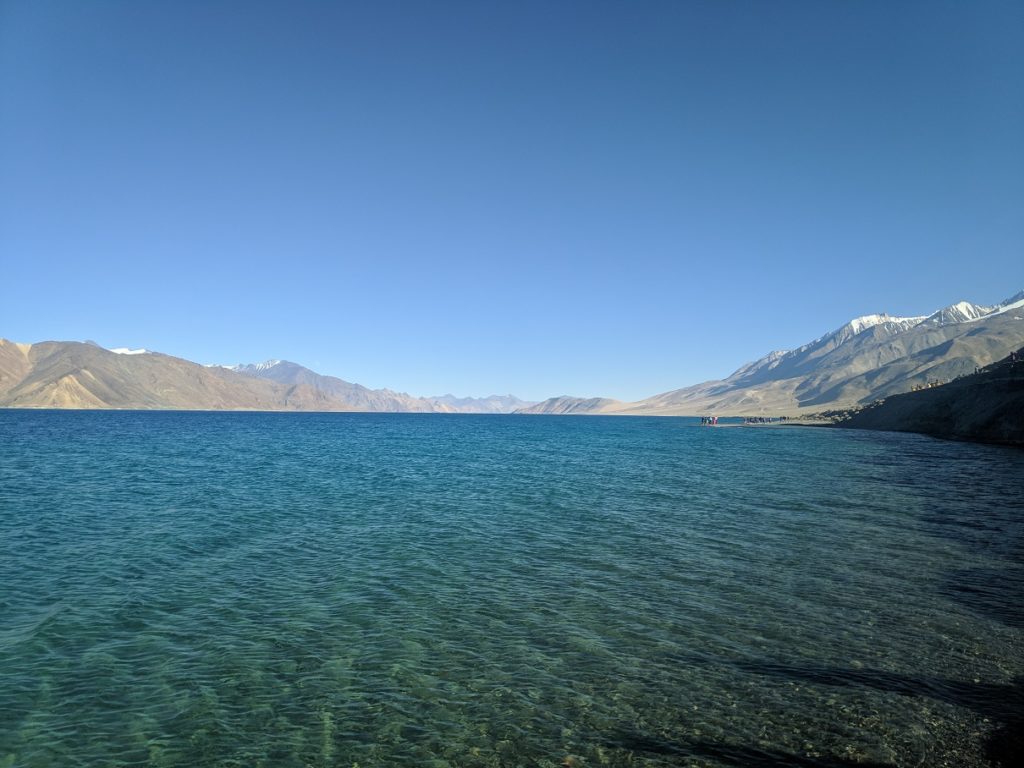
Day 05: Nubra Valley – Pangong Lake
Drive: 130 kms.
Time: 05 – 06 hrs.
Altitude: 4,250M
After early breakfast visit Diskit Monastery and have wonderful view of Nubra valley.Later drive for Pangong Lake(4,250M) crossing Durbuk and Tangste via Shyok. On arrival check in to camp site, later free at Leisure around Pangong lake, witness the amazing colour changing crystal clear water in the laps of mighty Himalayas. Dinner and overnight stay in Pangong.
Meals: Breakfast and Dinner
Day 06: Pangong – Leh
Drive: 140 kms.
Time: 06 – 07 hrs.
Altitude: 3,500M
Early in the morning see the Sun raising, later drive to Leh by crossing Chang La Pass (5,358M third highest motor-able road in the world) en route visit Thiksey Monastery &Shey Palace Upon arrival at Leh, check in to hotel for dinner and overnight stay.
Meals: Breakfast and Dinner
Day 07: Departure Leh
Morning after breakfast checkout from hotel and transfer to Leh.
Photo Gallery
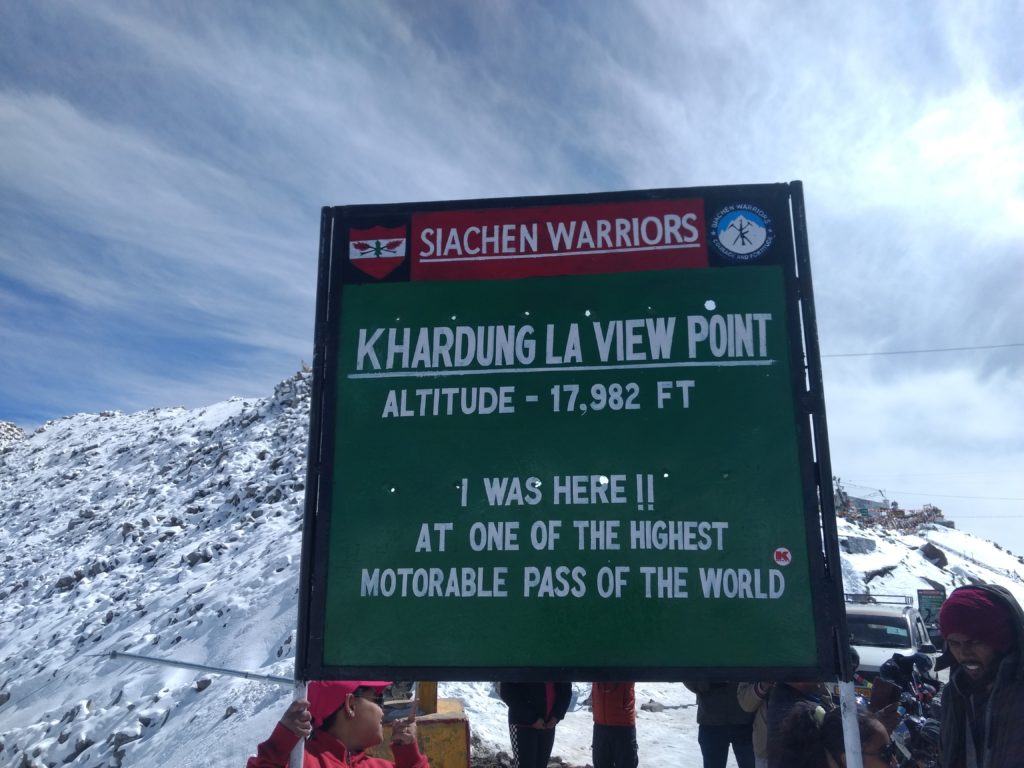
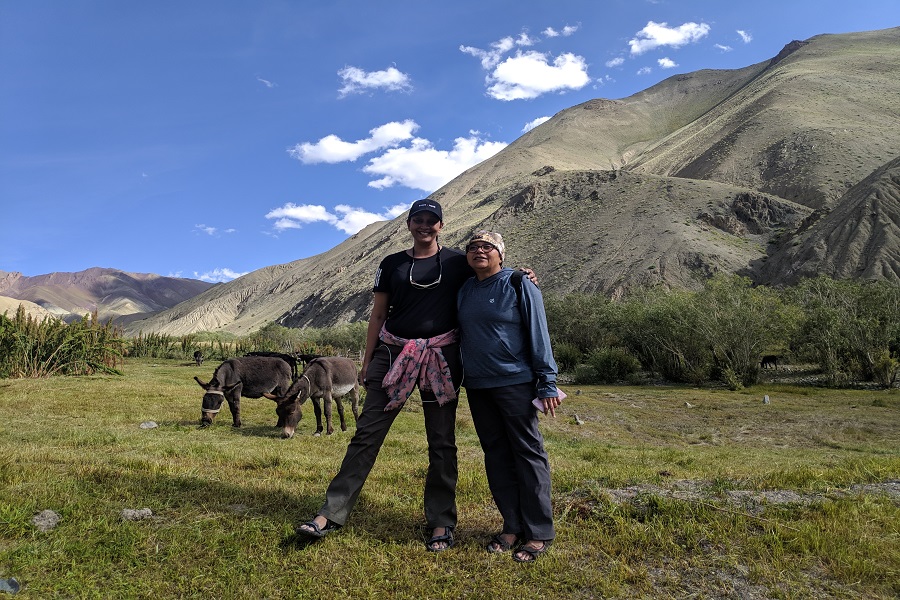
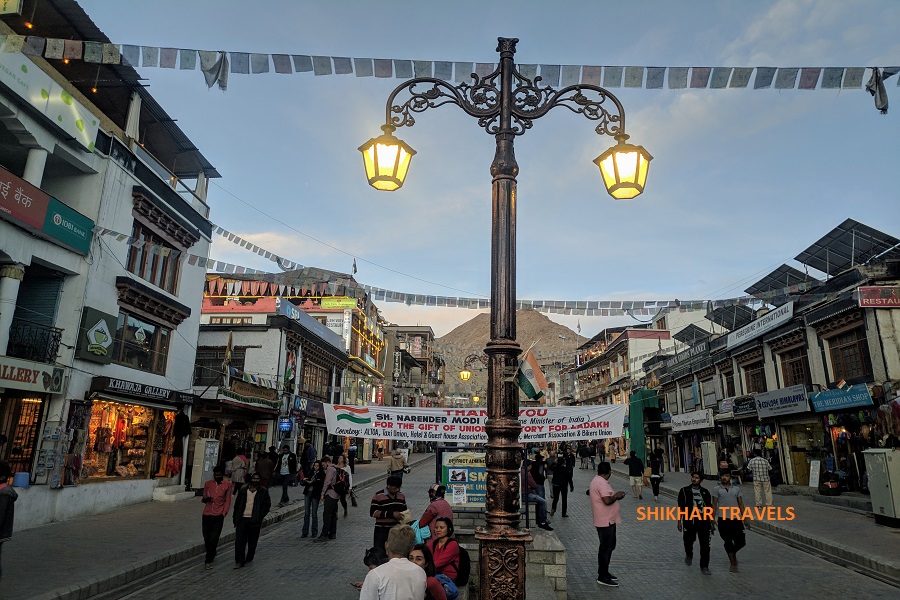
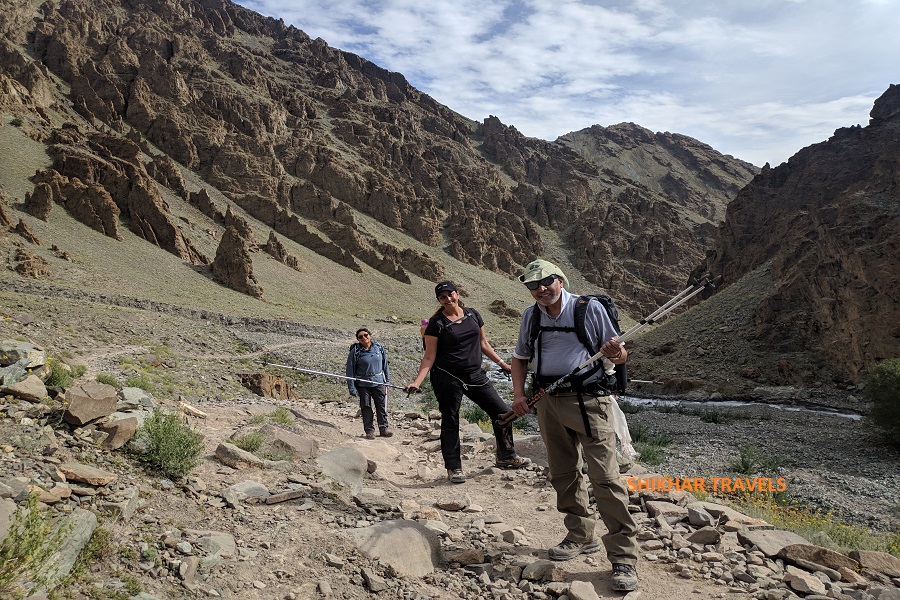
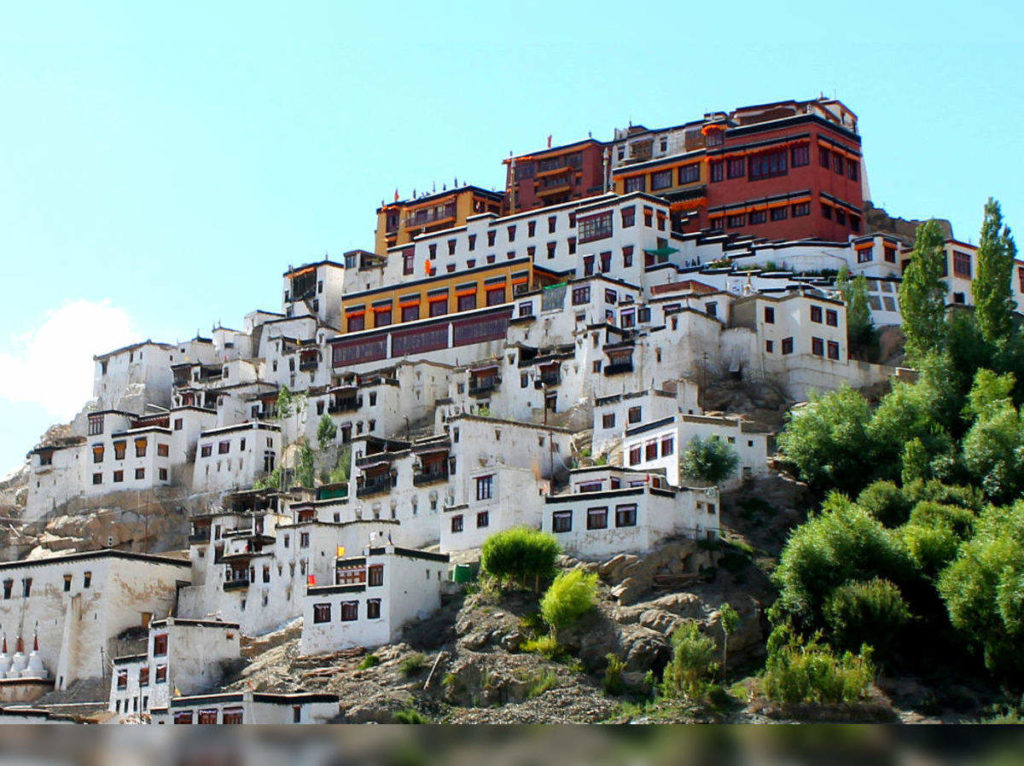
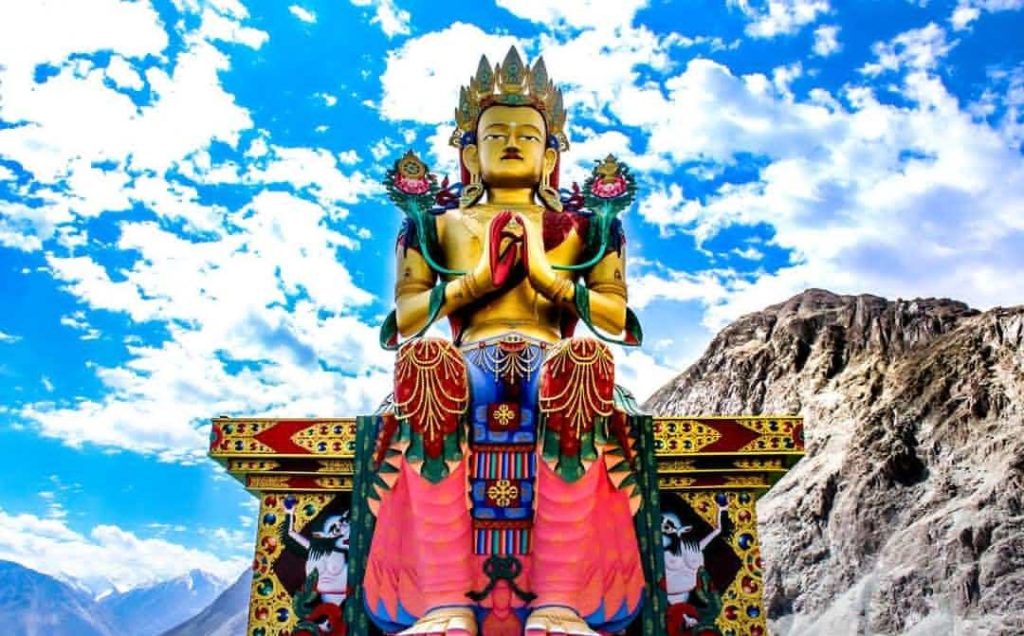
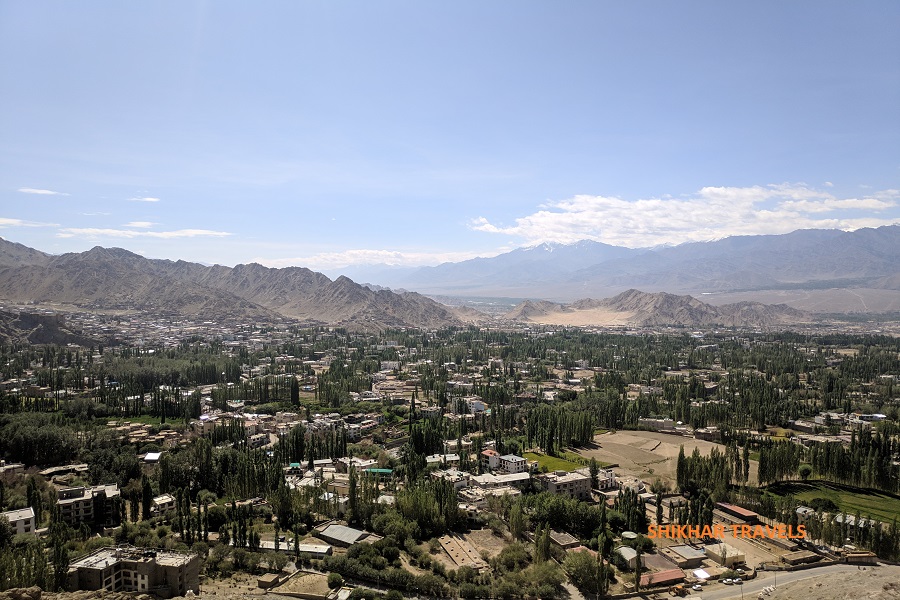
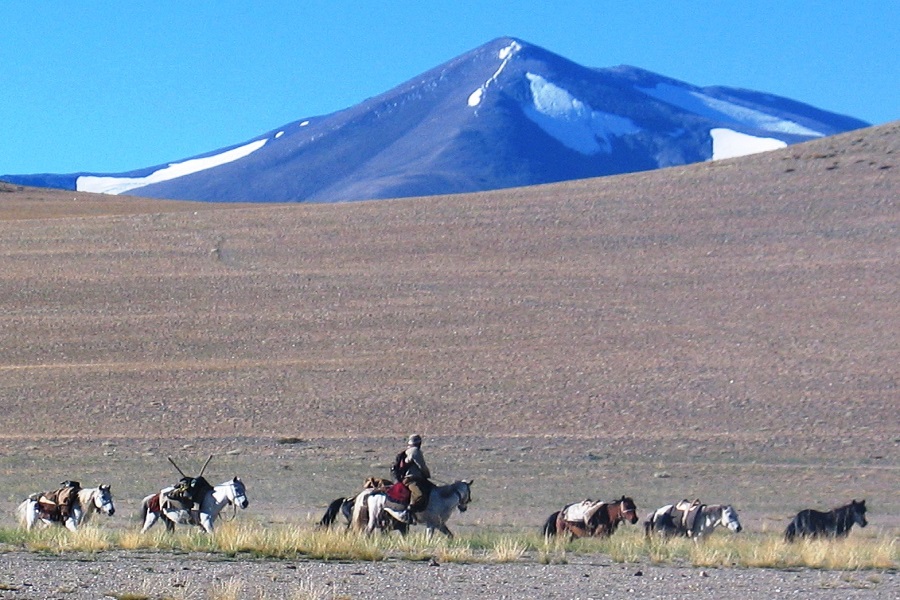
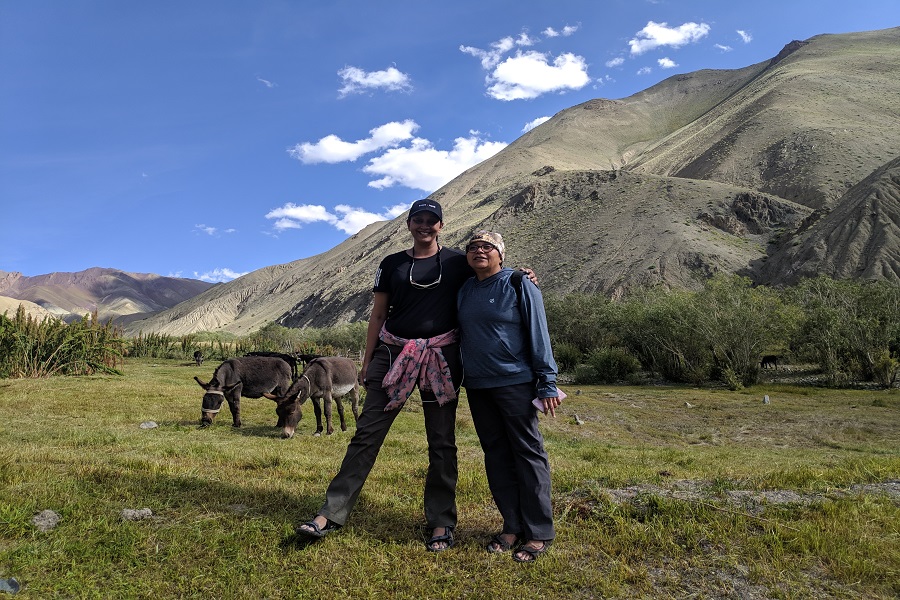
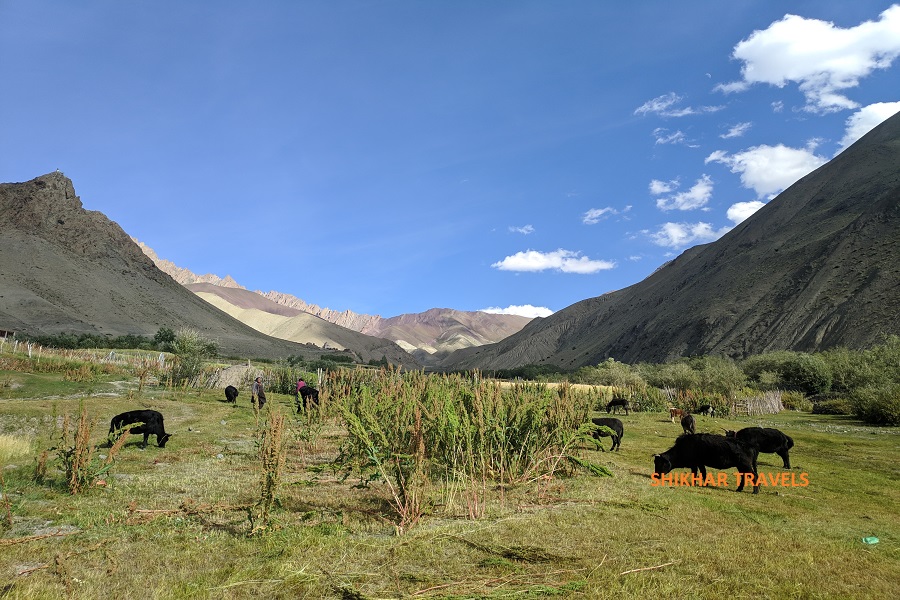
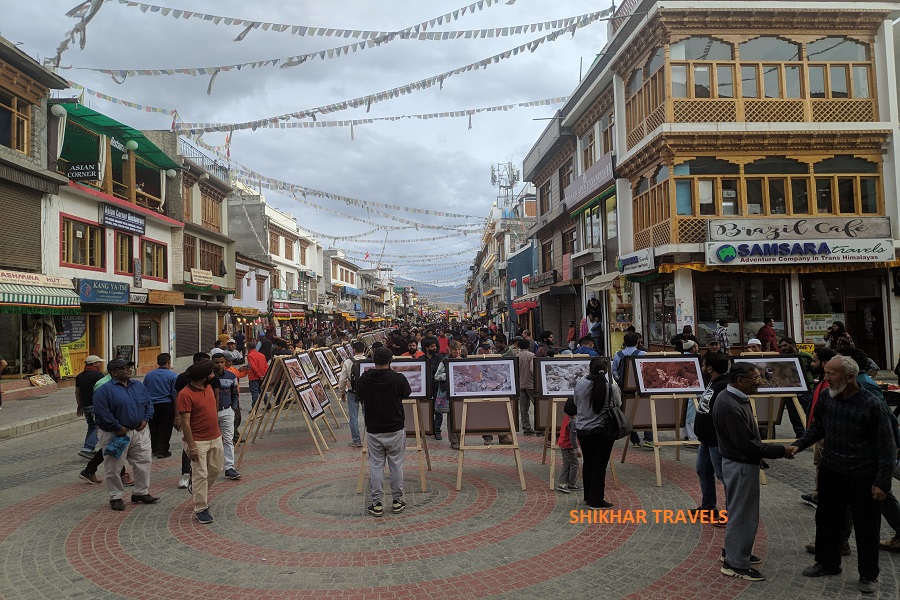
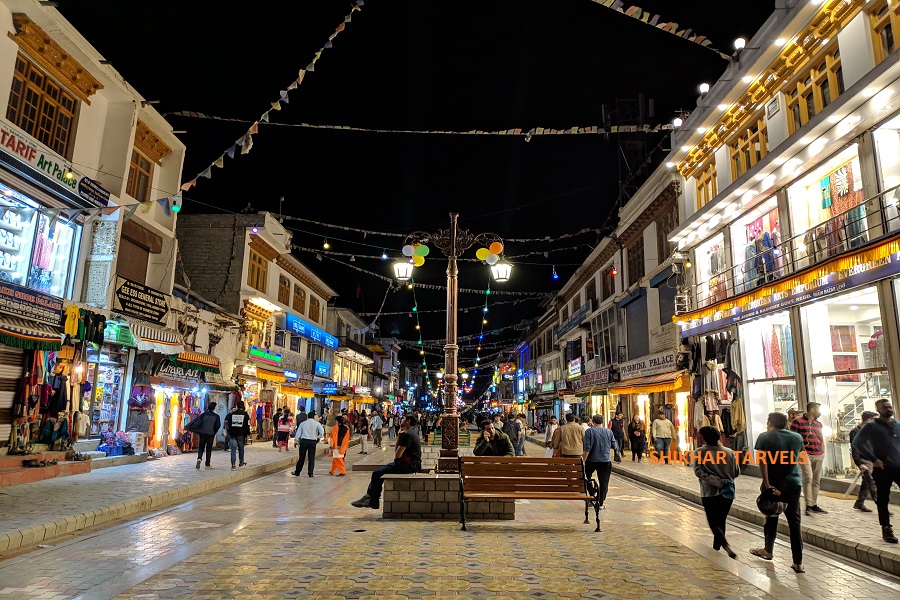
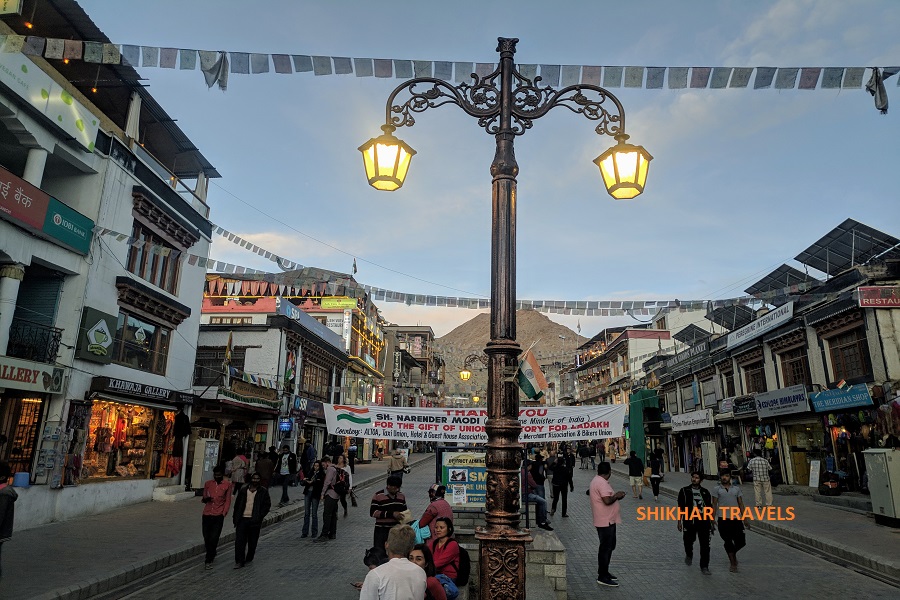
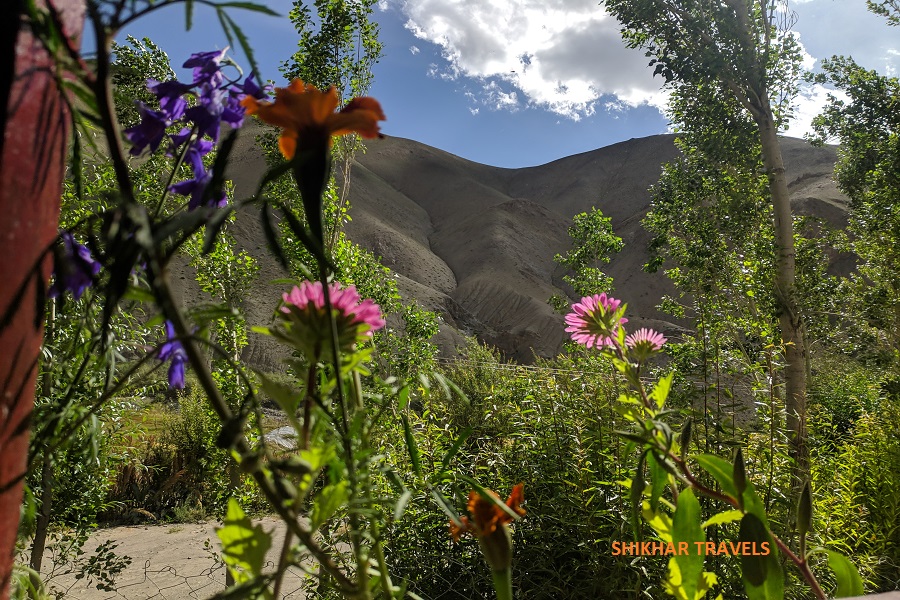
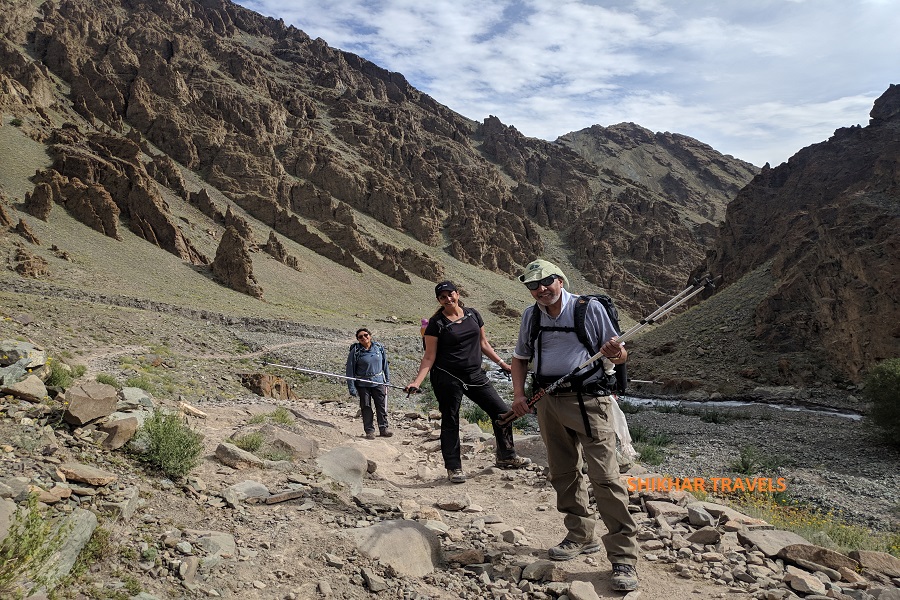
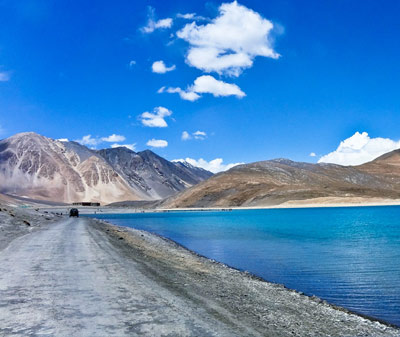
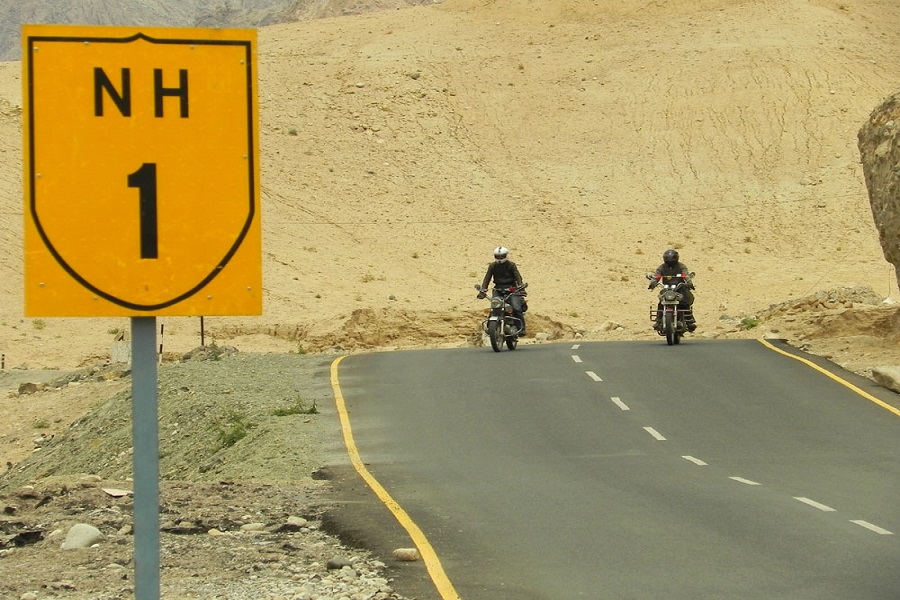
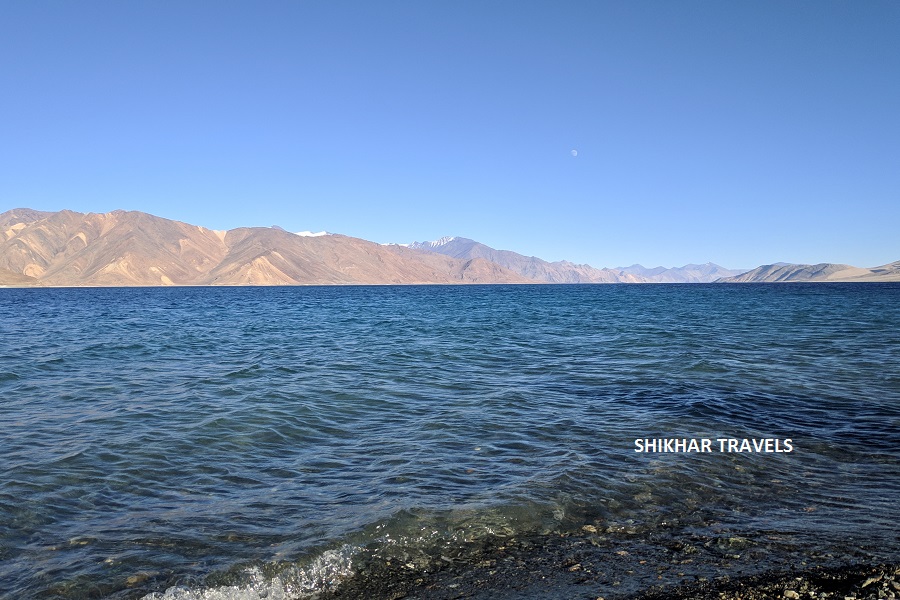
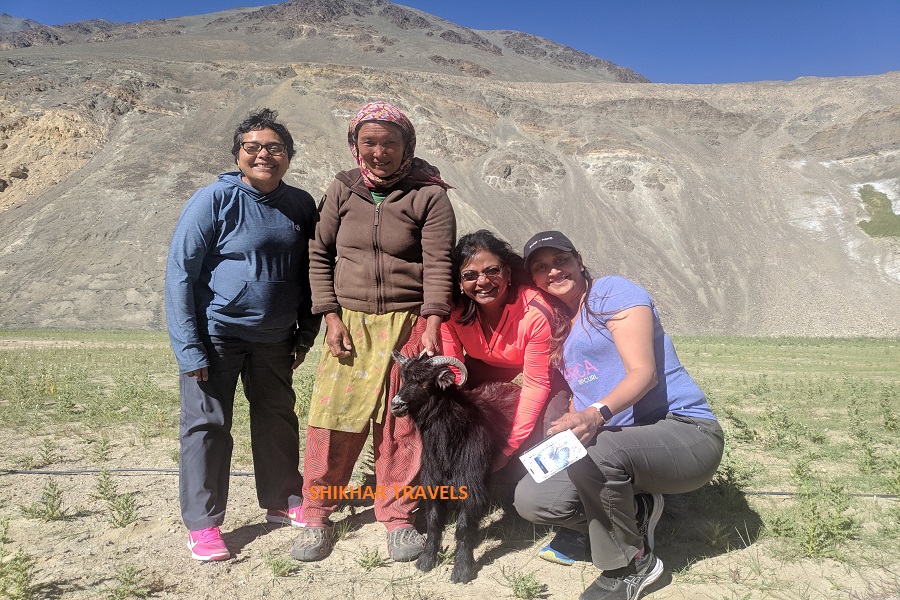
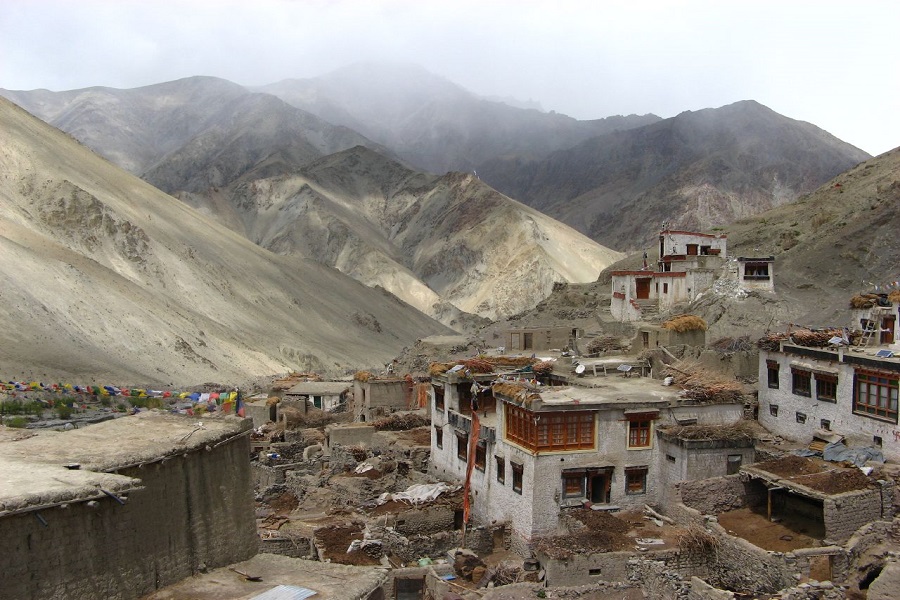
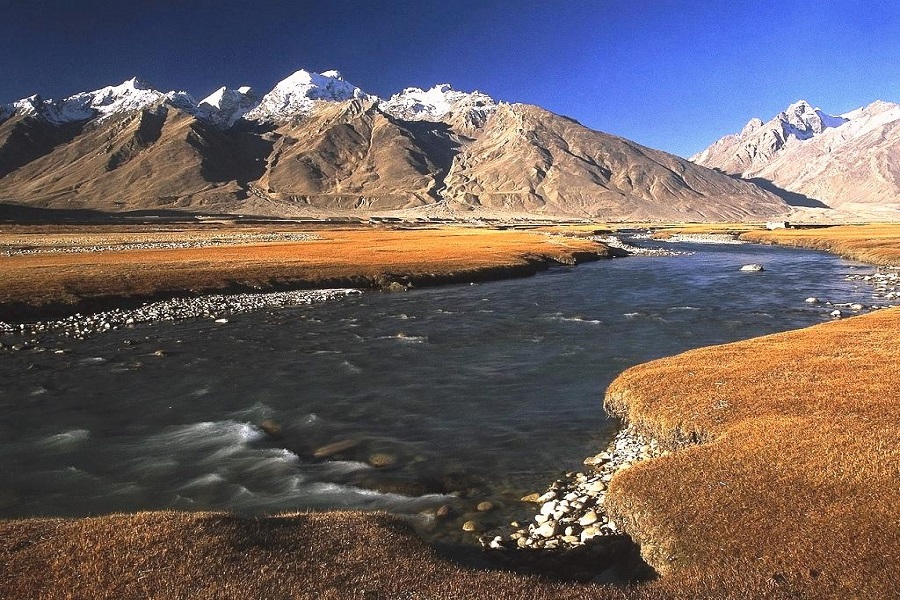
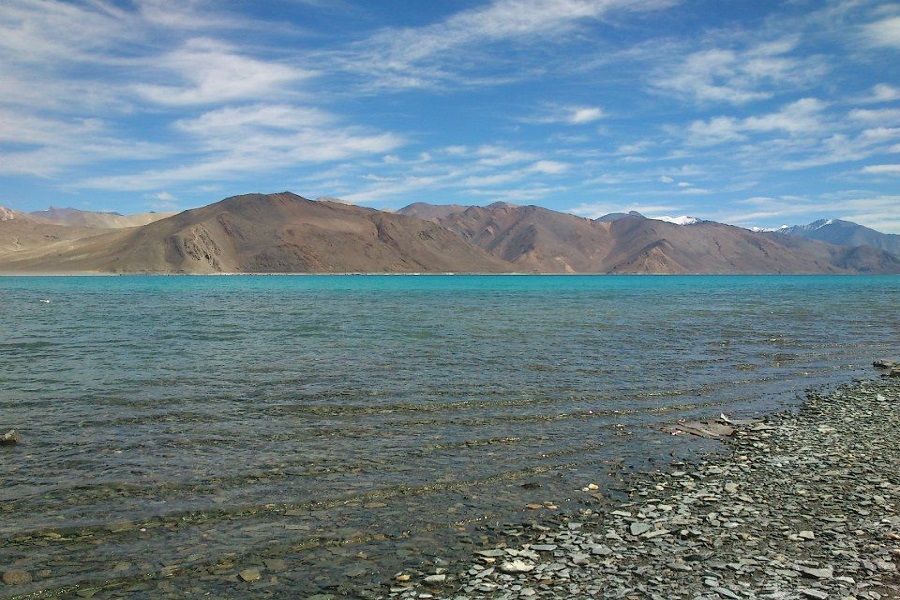
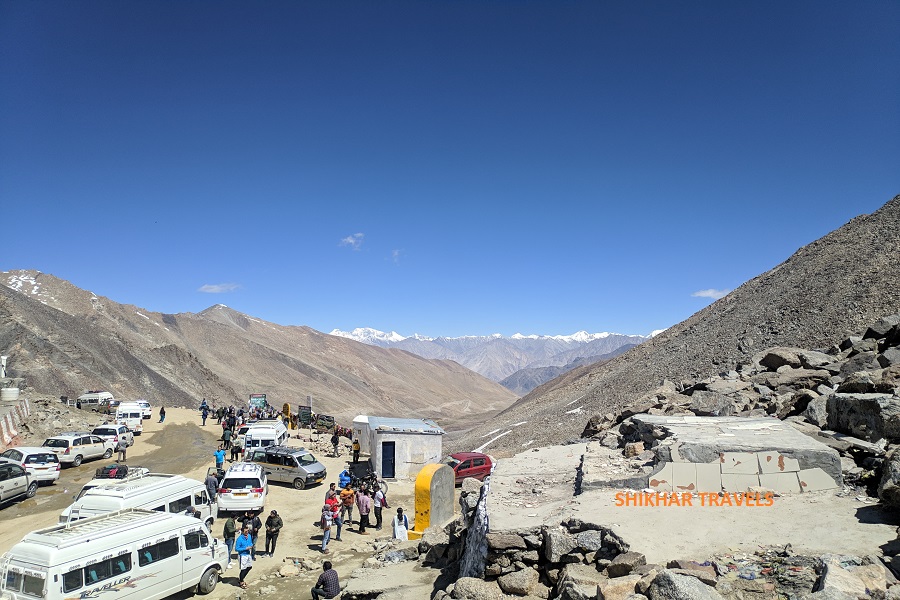
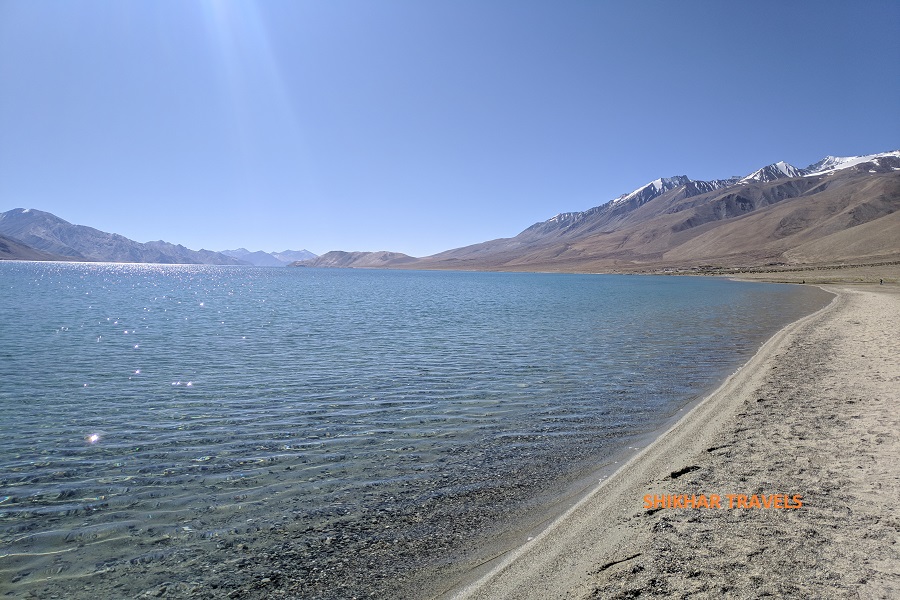
Thanks for sharing such a amazing information with us it pleasure to read your blog it help to all trekking blogger I am searching such a great tips from longtime but I didn’t found such valuable info .thanks once again keep posting such a post in future.
Thank you for showing your interest
Do you provide taxi service for leh trip within leh district ?